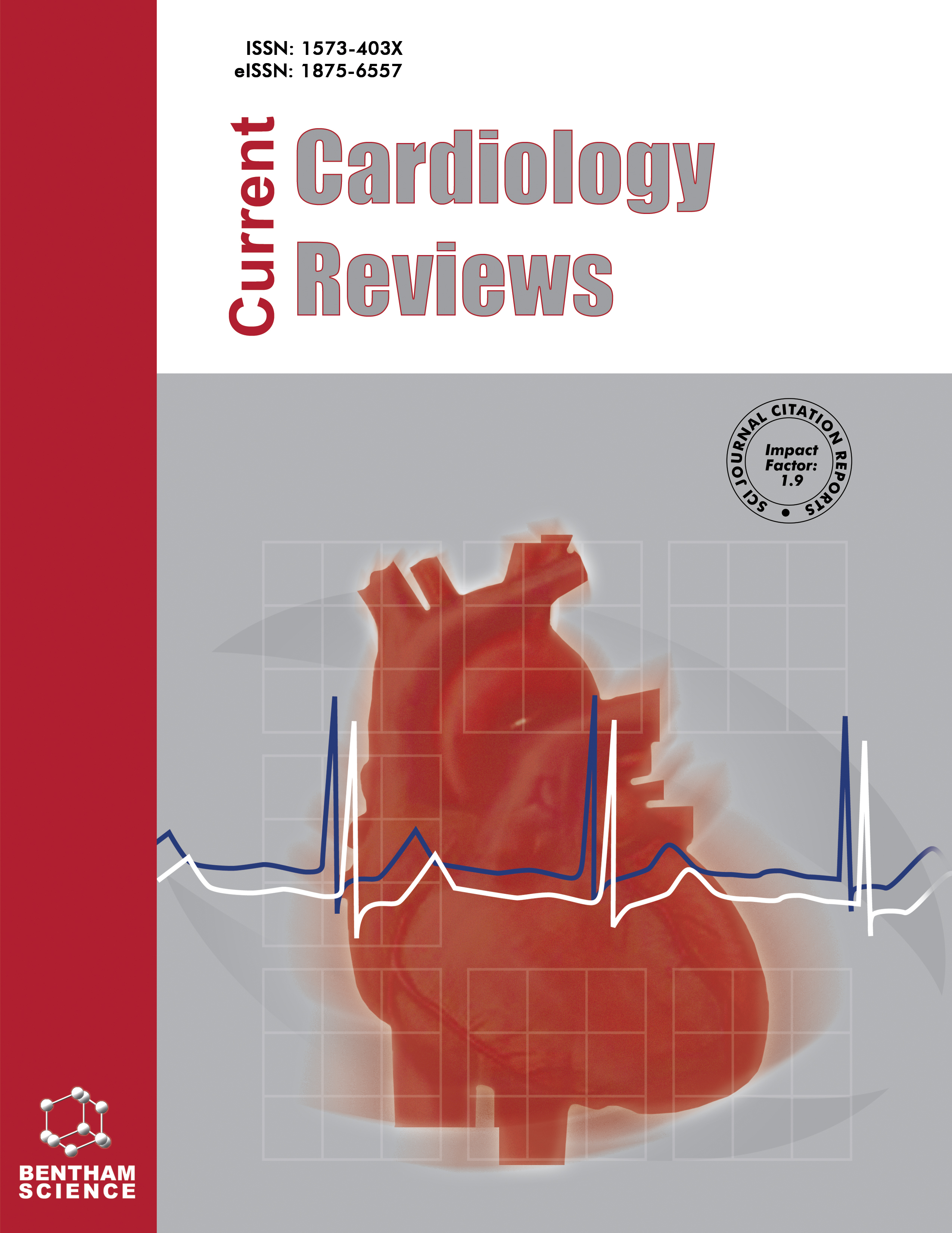- Home
- A-Z Publications
- Current Cardiology Reviews
- Previous Issues
- Volume 2, Issue 4, 2006
Current Cardiology Reviews - Volume 2, Issue 4, 2006
Volume 2, Issue 4, 2006
-
-
Preconditioning and Shear Stress in the Microcirculation in Ischemia-Reperfusion Injury
More LessPostischemic reperfusion causes microvascular endothelial cell dysfunction characterized by low shear stress, excessive oxidative stress and a reduced nitric oxide (NO) release. Recent studies have demonstrated that reduced shear forces are responsible for the impairment of endothelium-dependent vasodilation after ischemia reperfusion (I/R) injury. Preconditioning is an endogenous phenomenon whereby intermittent peri Read More
-
-
-
Oxidative Stress and the Pathogenesis of Atrial Fibrillation
More LessAuthors: Shahriar Iravanian and Samuel C. DudleyThere is growing evidence that oxidative stress is involved in the pathogenesis of atrial fibrillation. Many known triggers of oxidative stress, such as age, diabetes, smoking, inflammation, and renin angiotensin system activation are linked with an increased risk of the arrhythmia. Blockers of angiotensin II signaling and other drugs with anti-oxidant properties can reduce the incidence of atrial fibrillation. Now, studies in animal Read More
-
-
-
Fetal Arterial Changes in Response to Maternal Cigarette Smoking: Revisiting the Natural History of the Earliest Stage of Atherosclerosis
More LessAuthors: Luigi Matturri and Anna Maria LavezziThe current knowledge of the development and progression of atherosclerotic lesions is largely owed to experimental studies carried out in animals fed a high cholesterol diet. Only a few studies have addressed the atherogenic effects of other important exogenous risk factor, namely cigarette smoking. The results of our research into the effects of cigarette smoking on the fetal arterial wall have demonstrated that the first reac Read More
-
-
-
NADPH Oxidases in the Heart
More LessAuthors: Christof Meisch, Dirk Roos and Hans W.M. NiessenThe recently discovered protein family of NADPH oxidases (NOX) is a group of transmembrane proteins that generate reactive oxygen species (ROS) by transferring electrons from NADPH onto molecular oxygen. The NOX proteins are the catalytic subunits that assemble with several regulatory subunits to form the catalytically active enzyme complex. Of the regulatory subunits exist several isoforms that are differenti Read More
-
-
-
Assessment of Cardiac Performance with Magnetic Resonance Imaging
More LessA quantitative assessment of regional cardiac performance is required for the diagnosis of disease, evaluation of severity and the quantification of treatment effect. MRI allows the noninvasive quantification of motion and deformation in the heart, including the precise assessment of all components of deformation in all regions of the heart throughout the cardiac cycle. In recent years, these imaging protocols have beco Read More
-
-
-
Dynamic Ventricular Repolarisation: From Physiology to Prognosis
More LessAuthors: Olivier Xhaet, Philippe van de Borne and Atul PathakIdentification of high-risk patients for sudden cardiac death (SCD) remains difficult. Non-invasive markers evaluating changes in heart rate and ventricular repolarisation (VR) have been developed to stratify this risk. Most studies using VR analysis rely on static analysis of the QT interval which is poorly reproducible and heart rate dependent. Dynamic VR analysis assesses QT interval modification according to RR duration Read More
-
-
-
The Coronary Circulation in Cyanotic Congenital Heart Disease
More LessBackground: The coronary circulation in cyanotic congenital heart disease (CCHD) encompasses extramural coronary arteries, basal coronary blood flow, flow reserve, the coronary microcirculation, and coronary atherogenesis. Methods: Coronary arteriograms were analyzed in 59 adults with CCHD. Dilated extramural coronaries were examined histologically in 6 patients. Basal coronary blood flow was determined with N- Read More
-
-
-
Why is the Inhibition of the Renin-Angiotensin System Effective for Preventing Cardiac Events in Patients with Coronary Risk Factors or Coronary Artery Disease?
More LessAuthors: Isabelle Pham and Alain NitenbergPrimary and secondary strategies for preventing cardiac events remain a major challenge in cardiovascular diseases. To date, there is robust evidence that inhibition of the renin-angiotensin system by angiotensin-converting enzyme inhibitors or angiotensin II receptor antagonists significantly improves the outcome and prevents cardiac events in patients with coronary risk factors. This beneficial effect may be expl Read More
-
Volumes & issues
-
Volume 21 (2025)
-
Volume 20 (2024)
-
Volume 19 (2023)
-
Volume 18 (2022)
-
Volume 17 (2021)
-
Volume 16 (2020)
-
Volume 15 (2019)
-
Volume 14 (2018)
-
Volume 13 (2017)
-
Volume 12 (2016)
-
Volume 11 (2015)
-
Volume 10 (2014)
-
Volume 9 (2013)
-
Volume 8 (2012)
-
Volume 7 (2011)
-
Volume 6 (2010)
-
Volume 5 (2009)
-
Volume 4 (2008)
-
Volume 3 (2007)
-
Volume 2 (2006)
-
Volume 1 (2005)
Most Read This Month
Article
content/journals/ccr
Journal
10
5
false
en


